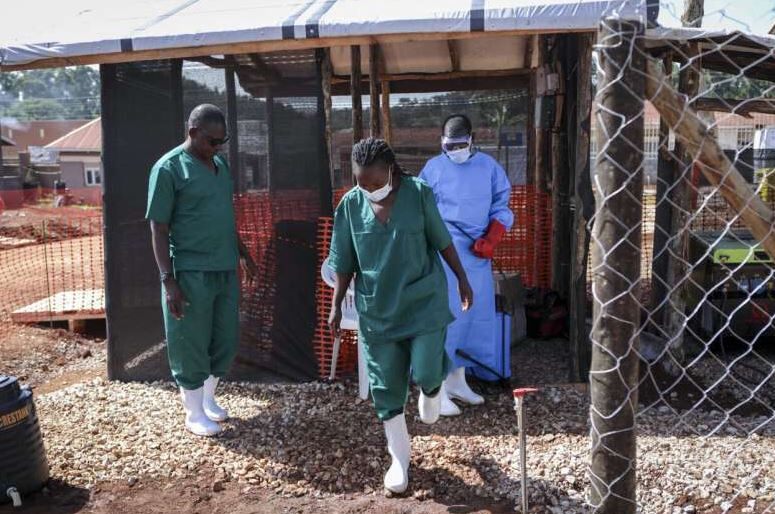Concerned about the spread of Ebola in Uganda, the Biden administration announced on Thursday that travellers who had recently visited that country would be redirected to airports where they can be screened for the virus. The administration also warned medical professionals to be on the lookout for potential cases of Ebola in the United States.
Although there have been no instances of Ebola recorded outside of Uganda as of yet, the virus is very infectious despite the fact that it can only transmit via direct contact with body fluids and is not airborne. Because there are no vaccinations or therapies that have been licenced for the kind of Ebola virus that is causing the epidemic in Uganda, authorities in the United States are keeping a careful eye on the situation there.
The director of the Centers for Disease Control and Prevention gave the order to conduct the checks at airports, and the State Department issued a warning stating that the procedures would apply to all travellers, including nationals of the United States of America.
An official familiar with the plan stated that the travel restrictions will not go into effect until the following week, despite the fact that screenings for certain passengers were scheduled to begin on Thursday. The official also emphasised that both the travel restrictions and the alert to medical professionals were issued as preventative measures.
As of Thursday, there were 44 confirmed cases and 10 fatalities in Uganda. Additionally, there were a few dozen probable cases and 20 deaths that are still under investigation, making this the worst epidemic in that nation in the last 20 years. There were at least six illnesses and four fatalities reported among those working in health care.
Arriving passengers who have been in Uganda within the previous 21 days will be directed to one of the following five airports in the United States: Kennedy Airport in New York, Newark Liberty International Airport in New Jersey, O’Hare International Airport in Chicago, Hartsfield-Jackson Atlanta International Airport, or Dulles International Airport in Washington, D.C.
According to a representative from the government, 62 percent of air travellers who have previously gone to Uganda transit via those airports. Before continuing on to their ultimate destinations, travellers will, upon arrival in the United States, be subjected to temperature checks and asked to complete out health questionnaires, which will then be shared with local authorities.
In addition, the Centers for Disease Control and Prevention (CDC) recommended medical professionals to ask patients with Ebola-like symptoms about their recent travels before diagnosing them with the disease.
The Centers for Disease Control and Prevention (CDC) issued a warning that said that although there are no direct flights from Uganda to the United States, passengers from or travelling through impacted regions in Uganda are able to reach the United States on aircraft connecting from other countries.
As a result of the pandemic caused by the coronavirus and the outbreak of monkeypox, President Biden and other federal authorities are well aware that infectious disease epidemics can entail political consequences. This may be the reason for the administration’s cautious approach to the situation. However, there is also historical evidence to support the limitation of travel.
After the coronavirus was discovered in China in February of 2020, the Trump administration declared a rare state of public health emergency and barred entry for the majority of foreign nationals who had recently visited the country. Additionally, it placed some American travellers in a quarantine and barred entry for other foreign nationals.
And in 2014, when there was an epidemic of Ebola in West Africa, the Obama administration mandated that people fly into airports in the United States that had screening processes in place. After Ebola cases were discovered in the United States, President Barack Obama personally got involved in the response to the disease.
Ebola is a devastating illness that is mostly seen in parts of Africa south of the Sahara. If treatment is not received, the infection will quickly destroy internal organs, while first presenting with just moderate respiratory symptoms.
Patients ultimately bleed from their eyes, nose, mouth, and rectum, which are dramatic symptoms that have contributed to an increased level of dread around the virus. On average, around one-half of persons infected with Ebola will pass away, and this often occurs within two weeks of the onset of symptoms.
Both the Centers for Disease Control and Prevention and the World Health Organization provide information on how to properly identify and care for persons who have been infected with the virus.
The epidemic was discovered for the first time in Mubende, Uganda, but it has now spread to four additional districts within a radius of 120 kilometres (75 miles). According to Dr. Fiona Braka, the emergency operations manager at the World Health Organization’s regional office for Africa, which is situated in Brazzaville, there will be a significant number of more cases and fatalities before the virus can be managed.
Officials in Uganda have been fast to act in order to ramp up the country’s reaction to the unanticipated epidemic. The number of people being interviewed as part of the contact tracing effort is growing, and around 950 village health authorities in the areas that have been hit have been educated on how to recognise signs of the disease. Dr. Braka said that personal protection equipment, thermometers, and bedding had been provided to the patients.
She went on to say that as a result of the lessons learned from earlier epidemics, the Uganda Virus Research Institute in Entebbe was replaced with a mobile lab in Mubende as the primary location for conducting tests. Confirmation of the diagnosis now only takes six hours to complete.
